Why you can trust Tom's Hardware
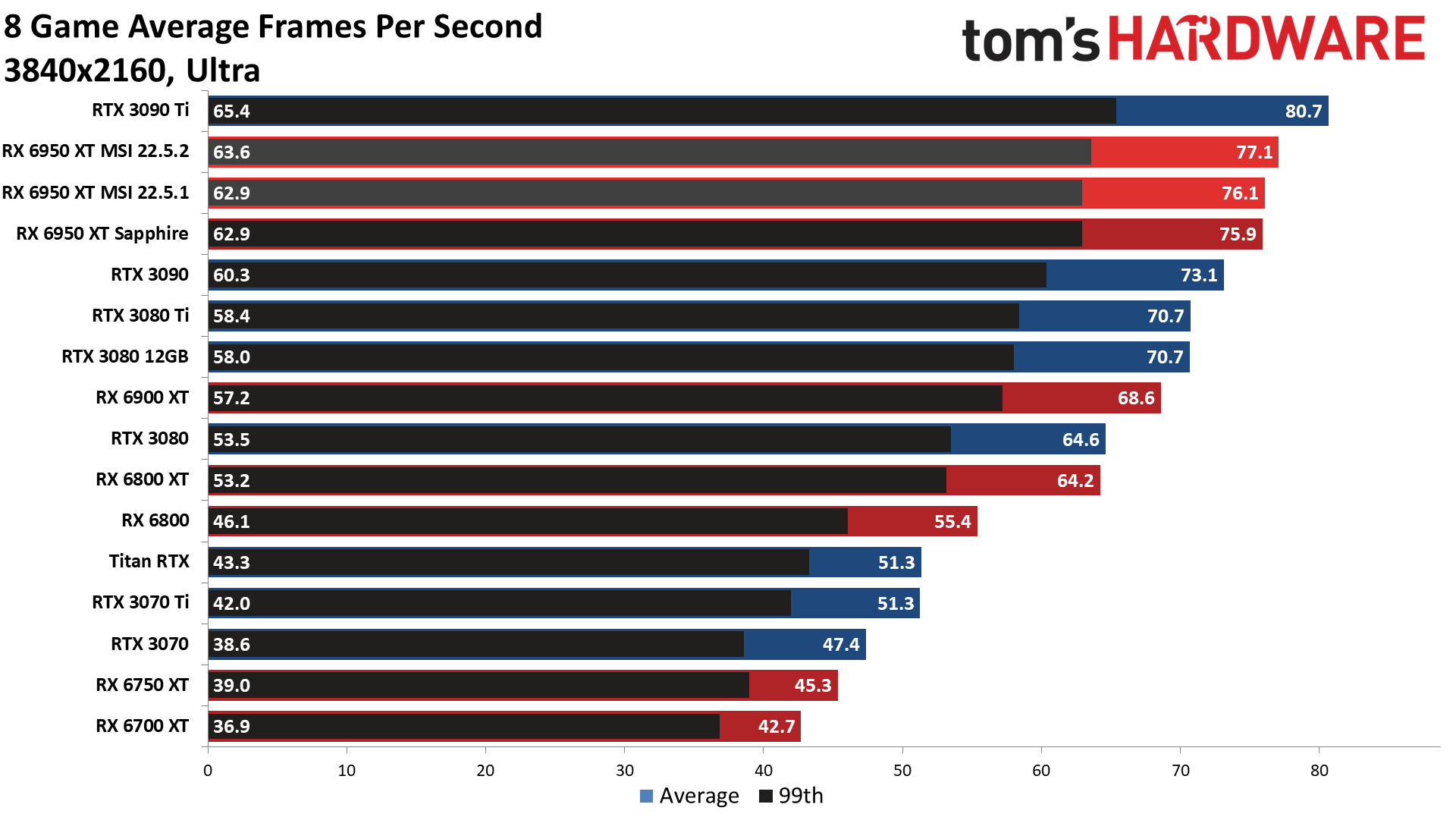
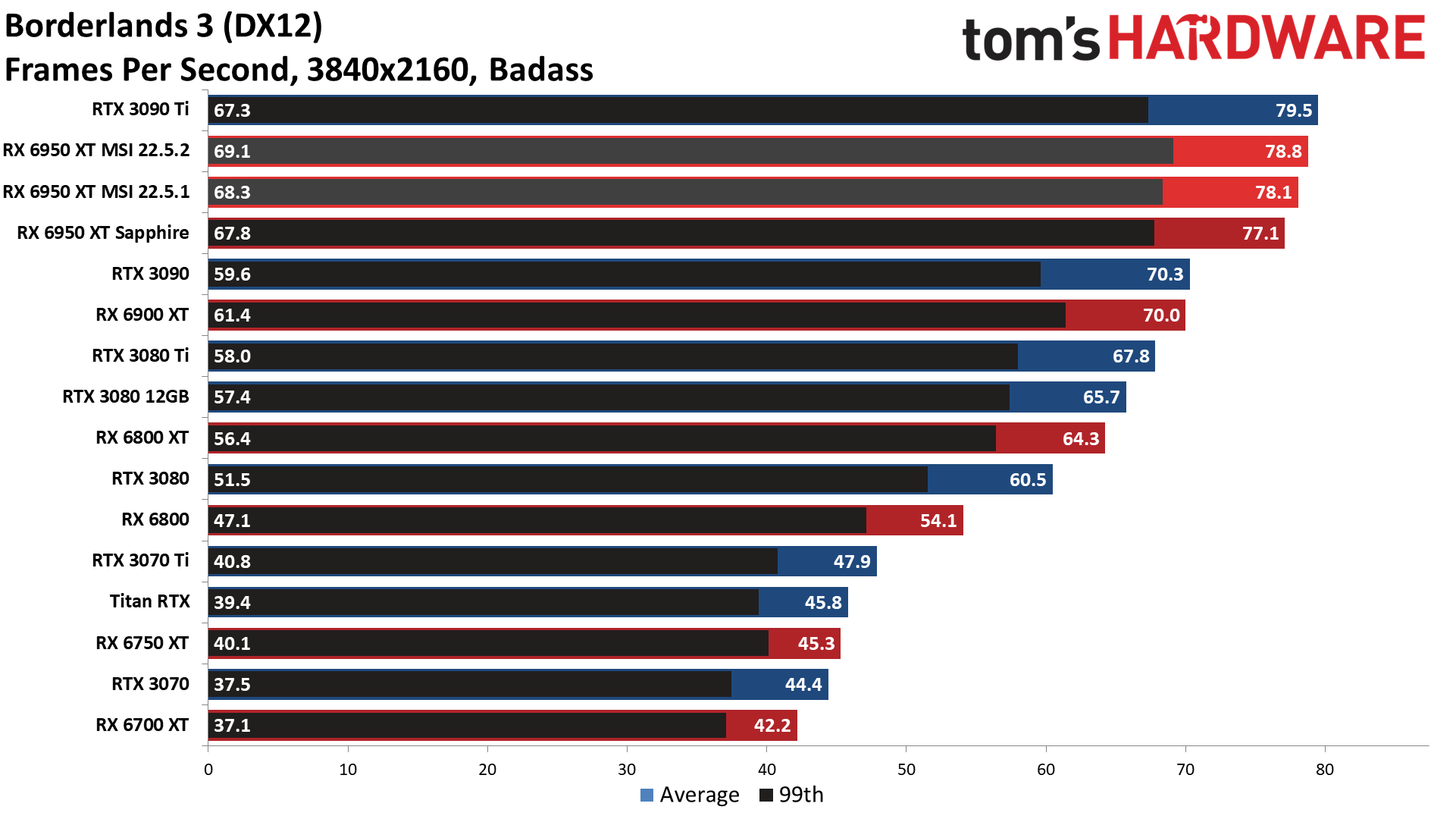
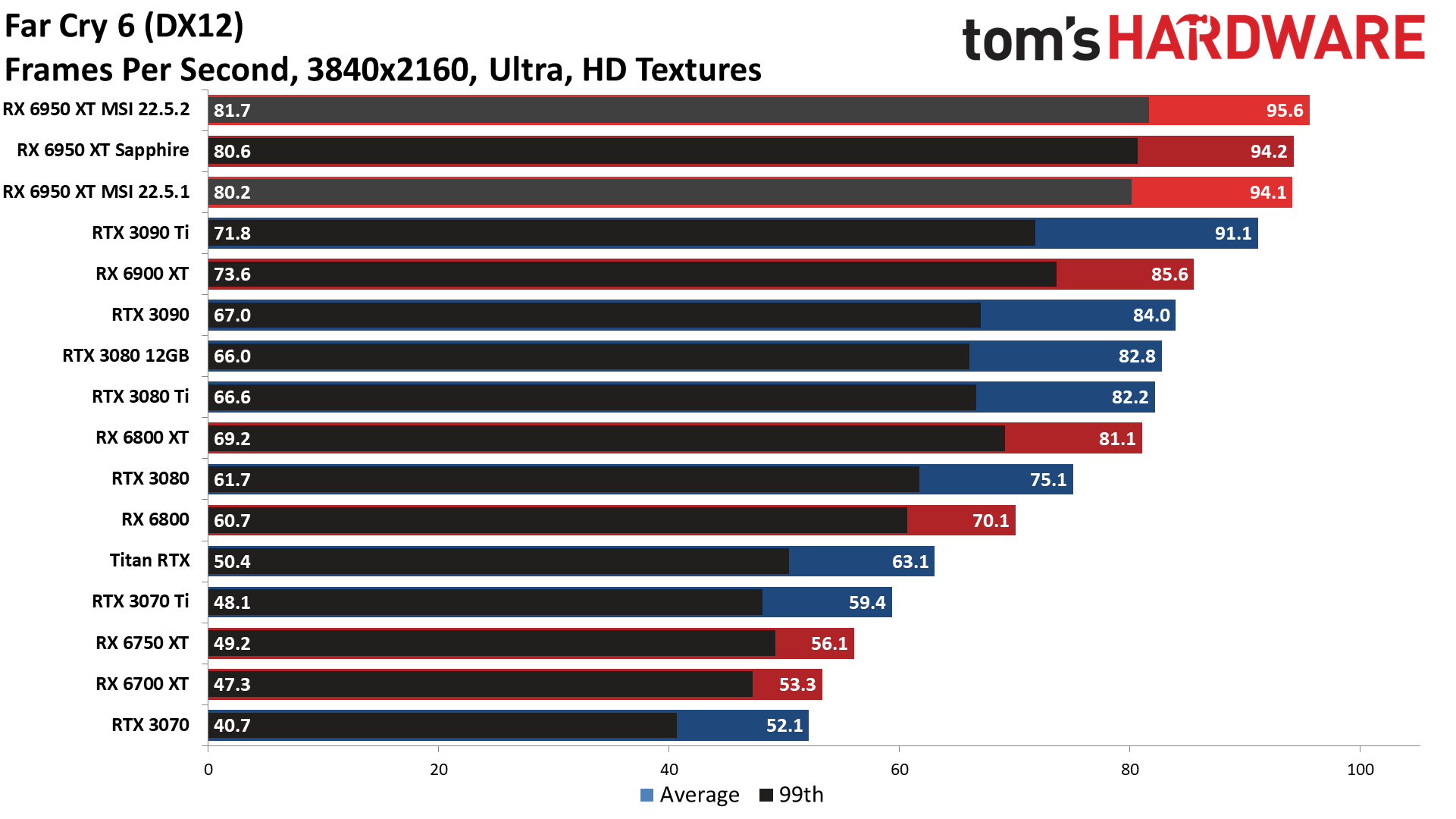
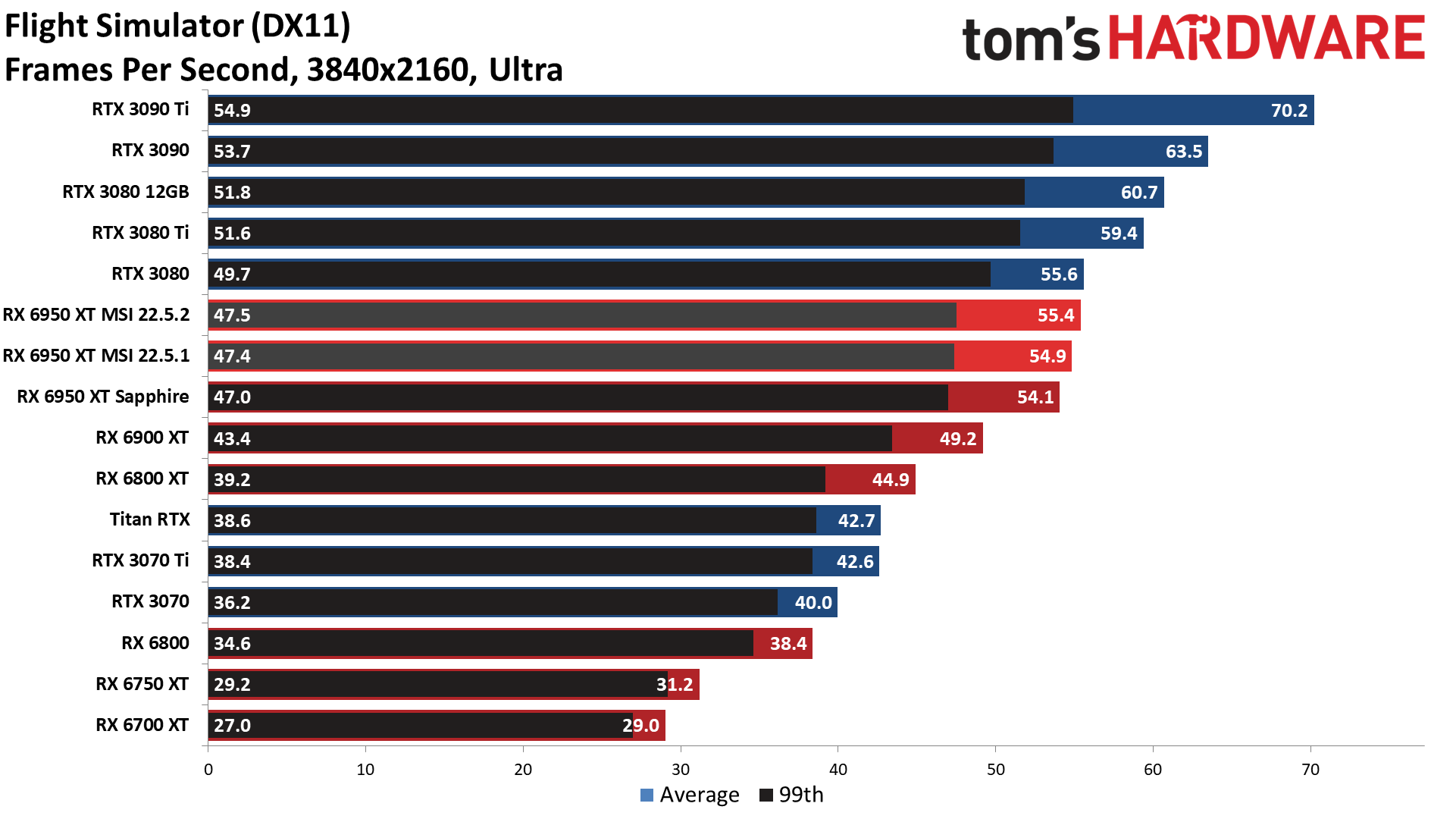
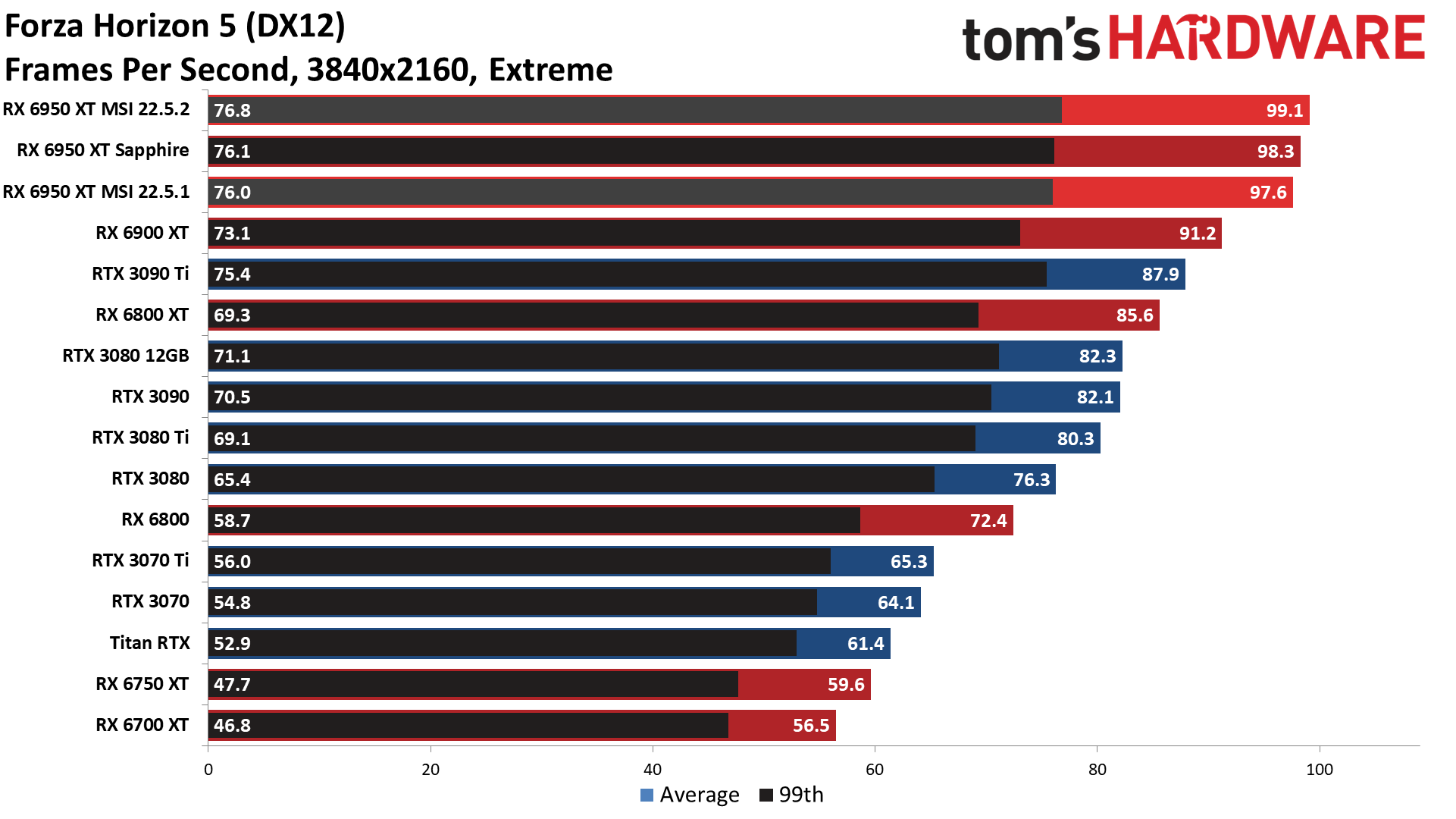
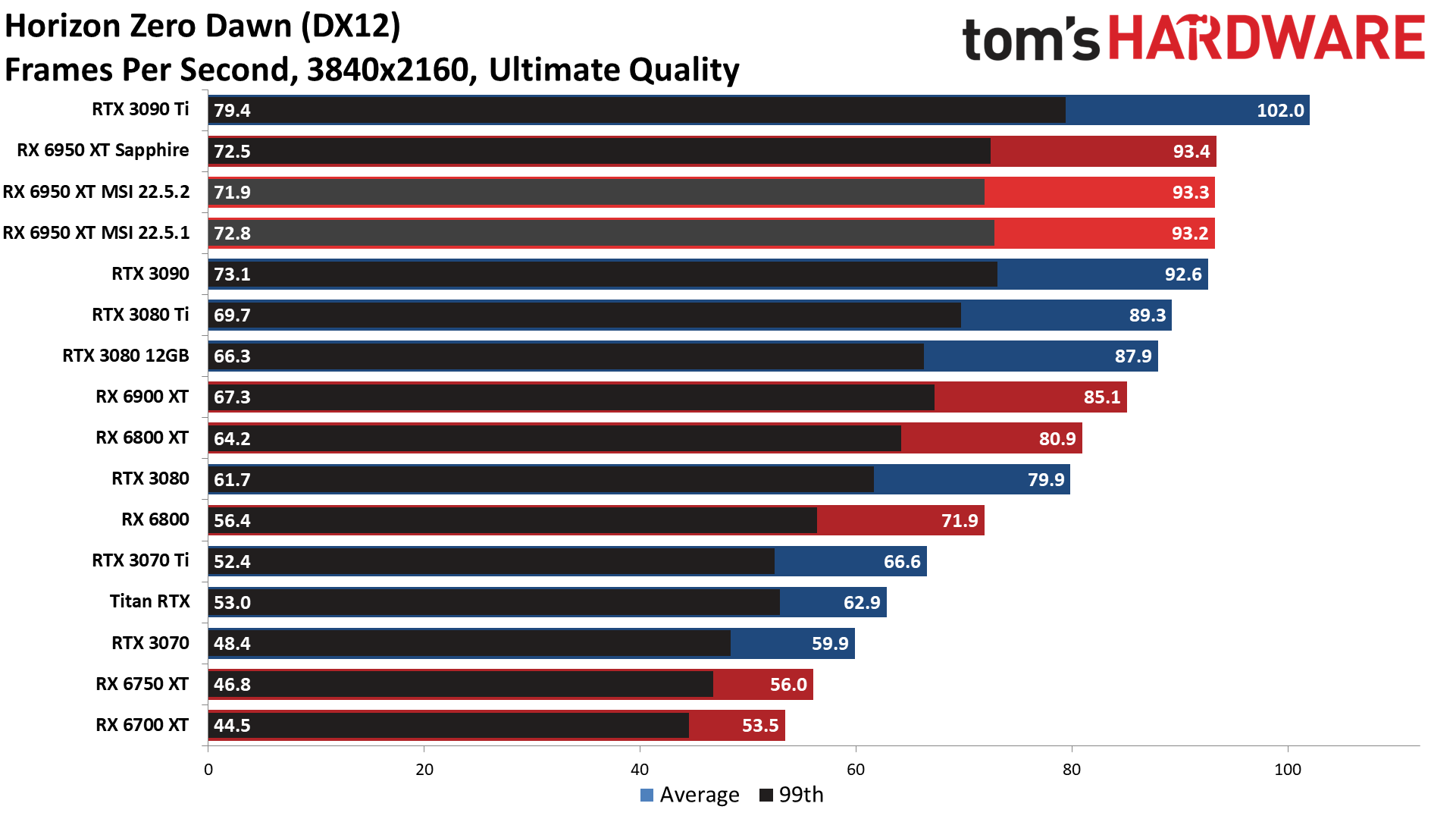
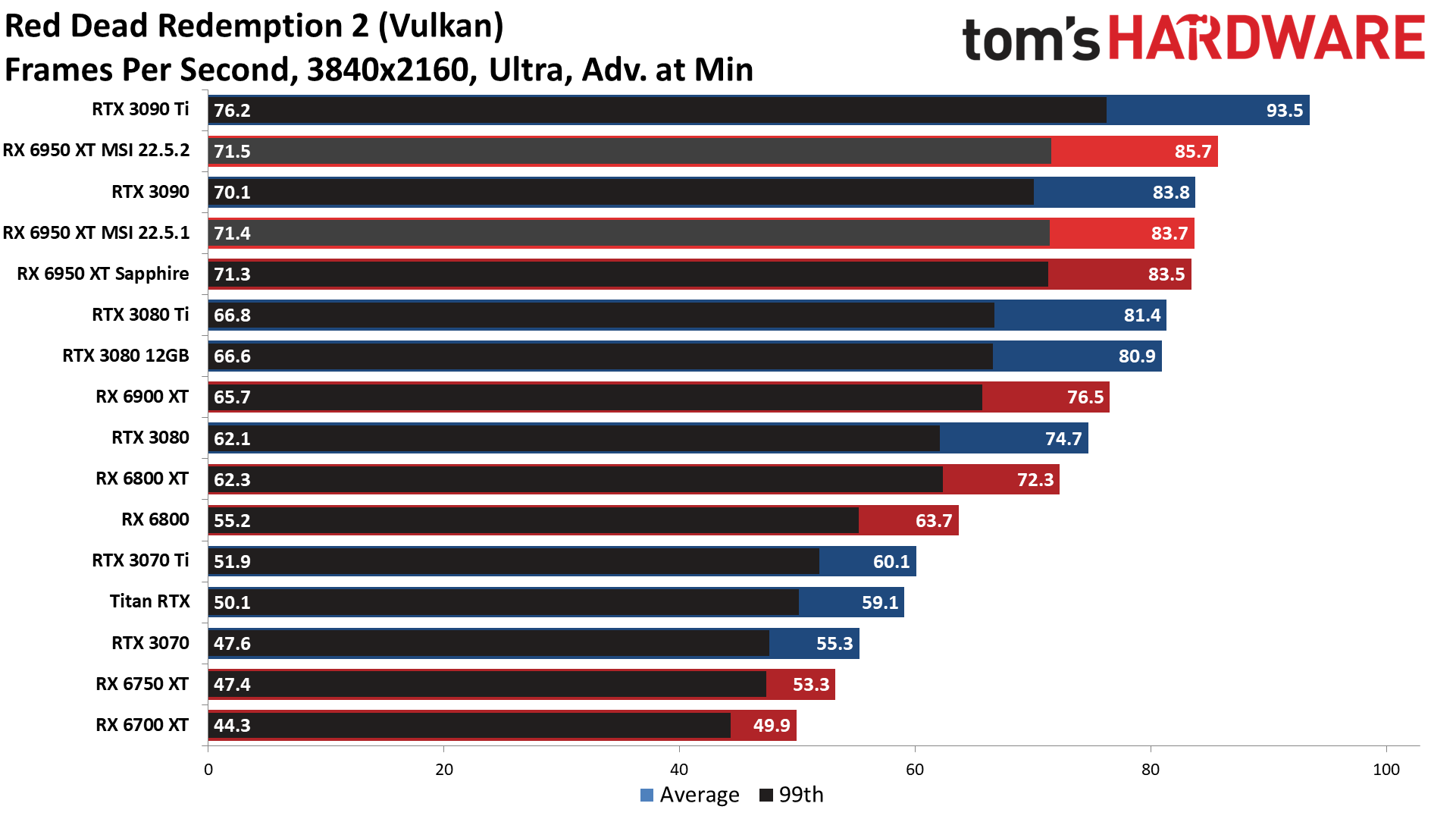
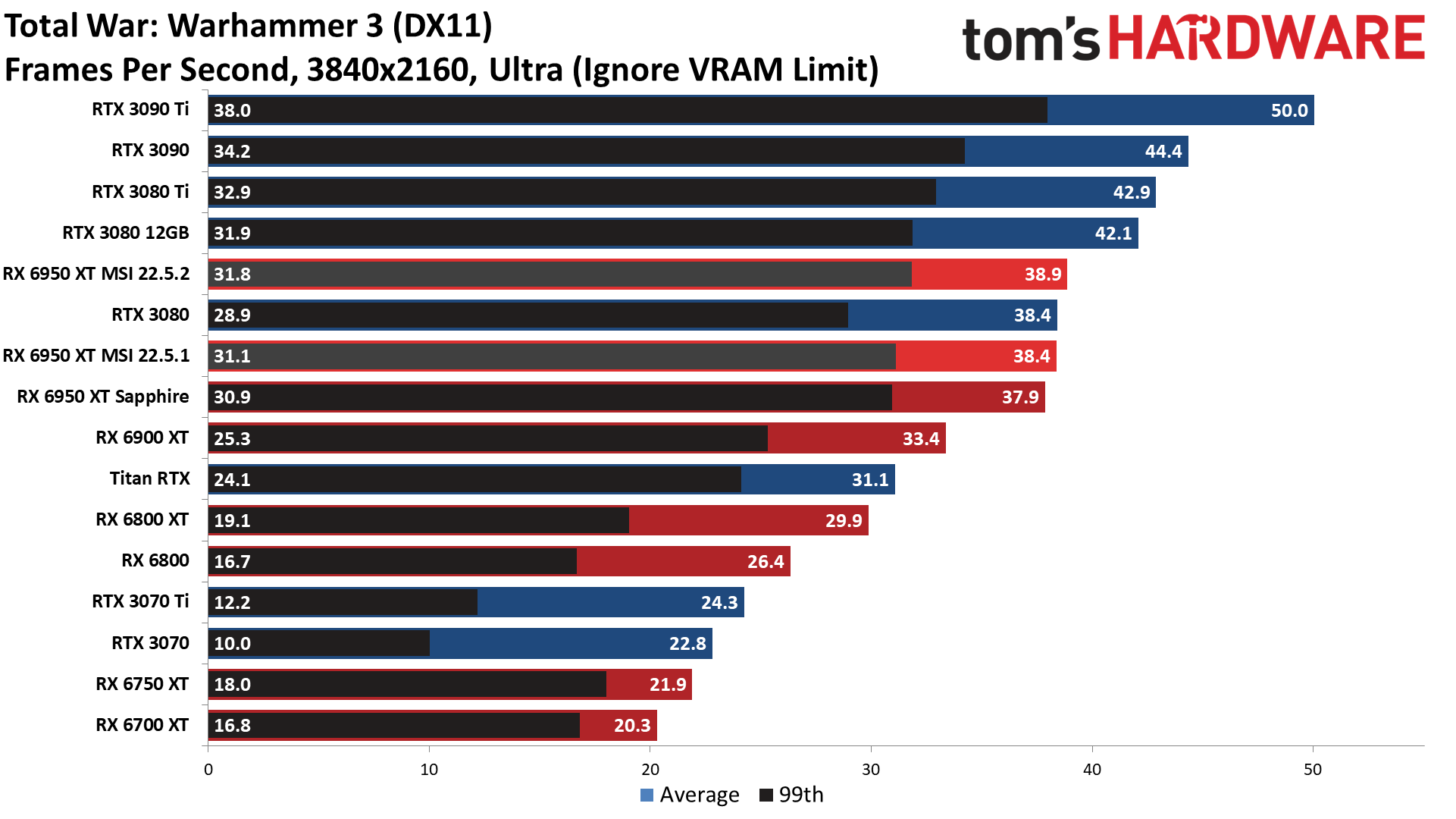
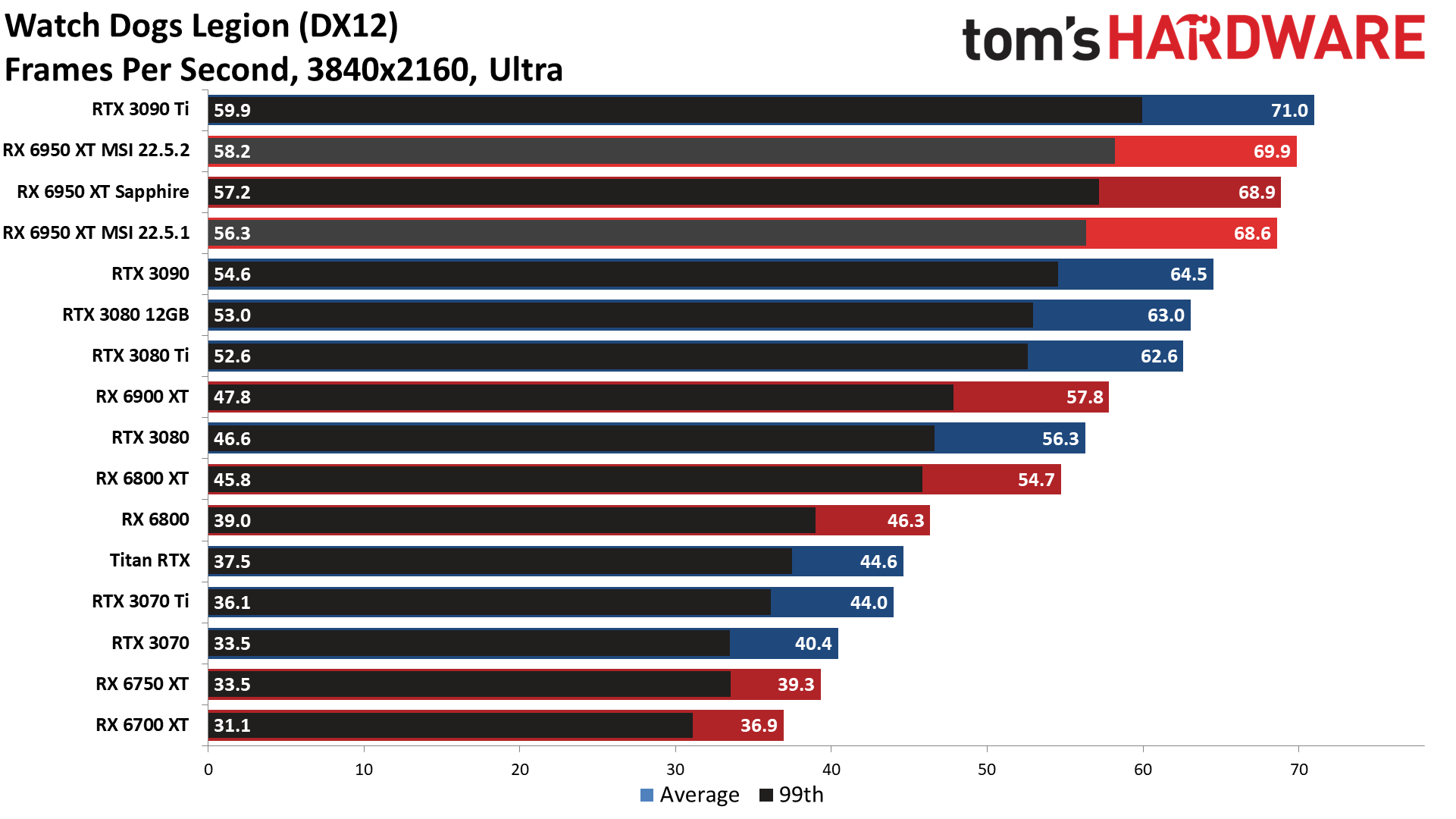
4K ultra is a good place to start with extreme GPUs like the RX 6950 XT. In our standard test suite, the MSI card ends up nearly tied with the Sapphire card — a 0.3% lead is definitely within the margin of error. Updating to the newer 22.5.2 drivers improved performance by just 1.3% overall, with very slight gains in every game we tested. CPU bottlenecks shouldn't be a factor at 4K, which is probably why the gains are a bit lower here than we saw at some of the other resolutions.
Even with the updated drivers, the RTX 3090 Ti still held down the top position, beating the RX 6950 XT by 5%. A big part of that is the fact that even a 128MB Infinity Cache can't quite hold all the data that might be needed. AMD has said cache hit rates drop from around 75% at 1440p to about 60% at 4K, which means memory bandwidth becomes more of a factor and the RX 6950 XT just doesn't have enough to keep up with the 3090 Ti. Still, it's an impressive showing and AMD still takes second place overall.
The individual game charts show areas where AMD excelled, and others where it fell far short. Far Cry 6 and Forza Horizon 5 put AMD well ahead of Nvidia's best, but conversely Flight Simulator and Total War: Warhammer 3 had multiple Nvidia GPUs outpacing AMD's best. In general, though, AMD still delivered better performance per dollar for most of its high-end and extreme GPUs, at least for standard gaming performance.
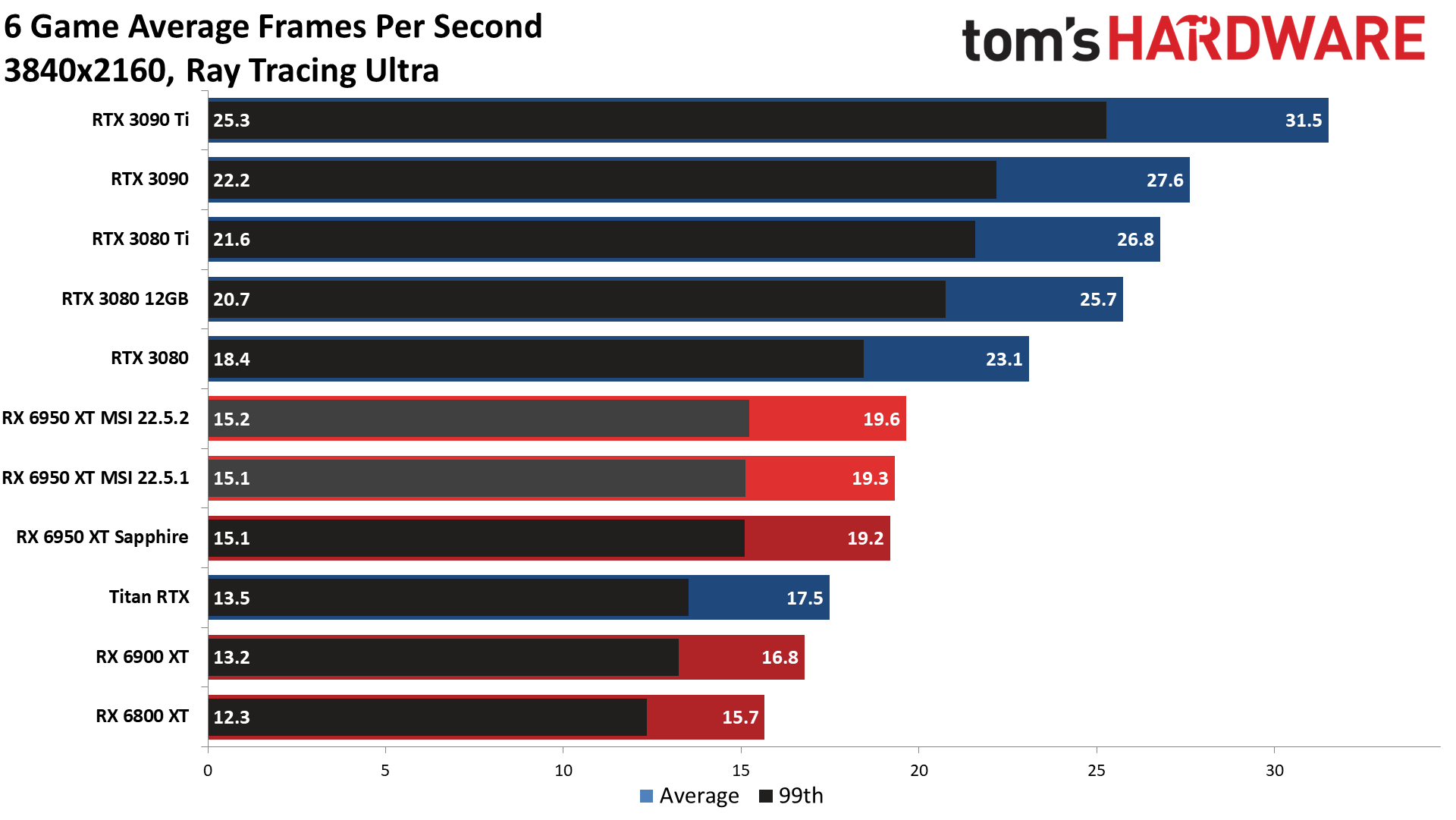
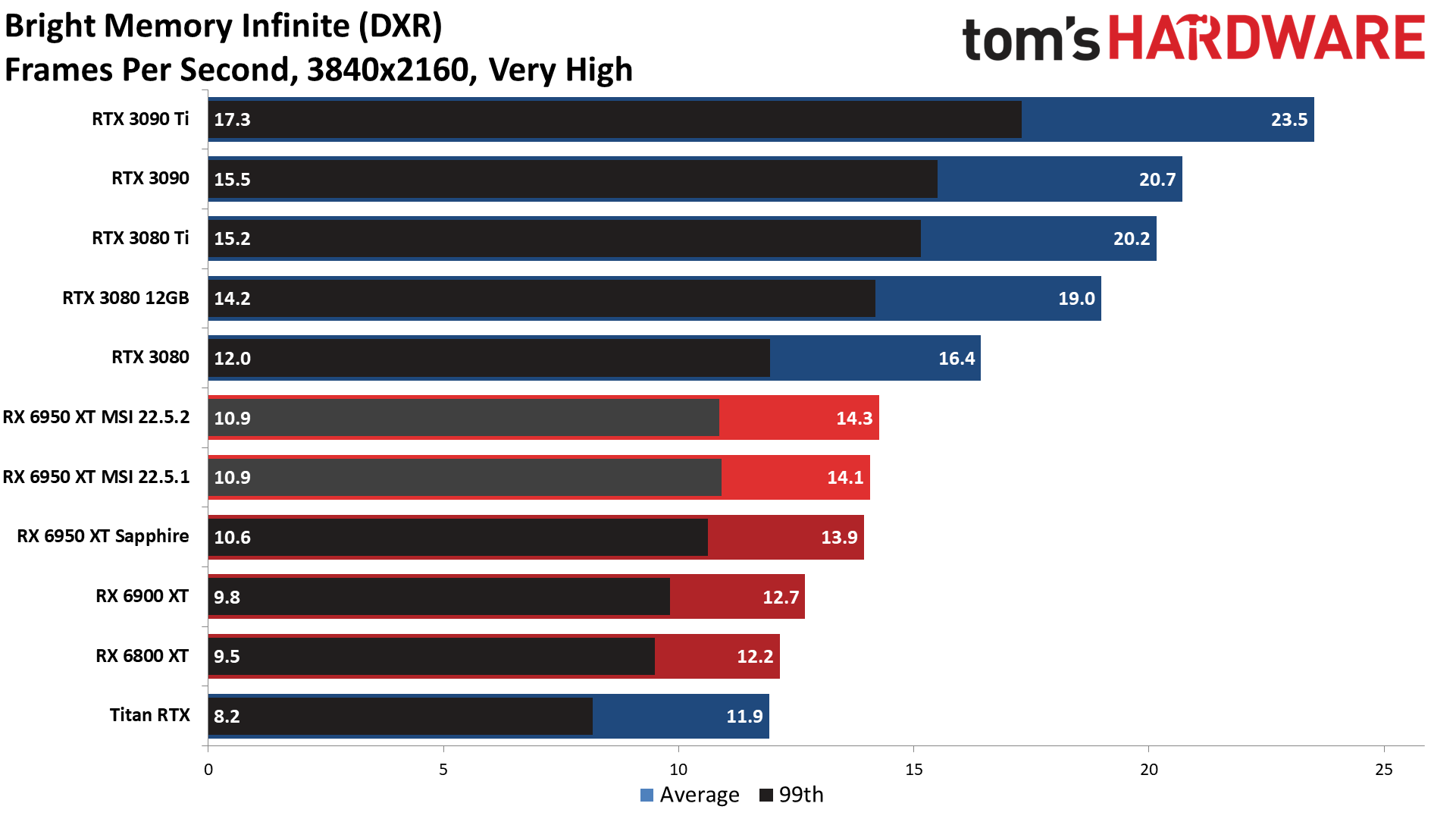
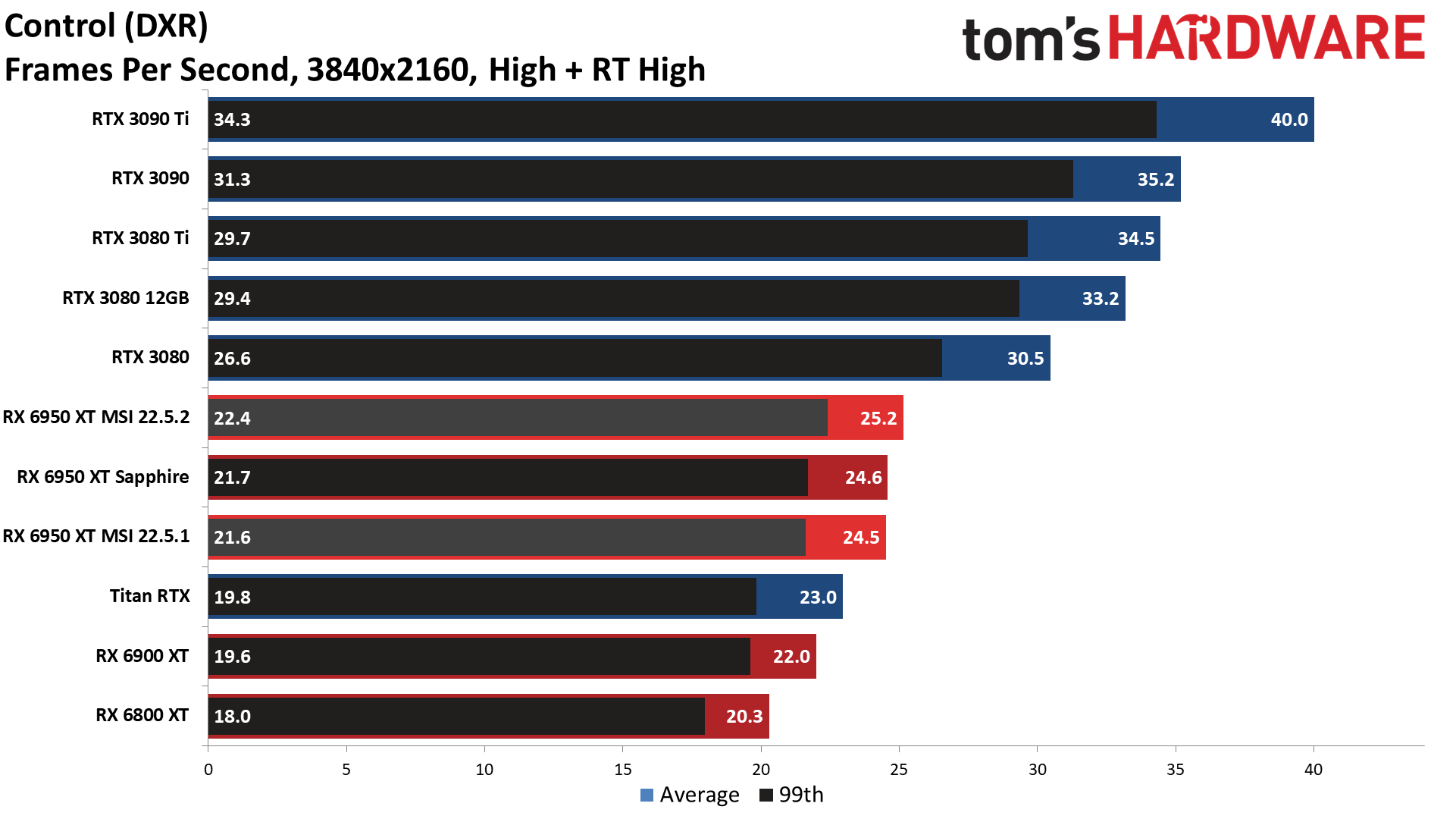
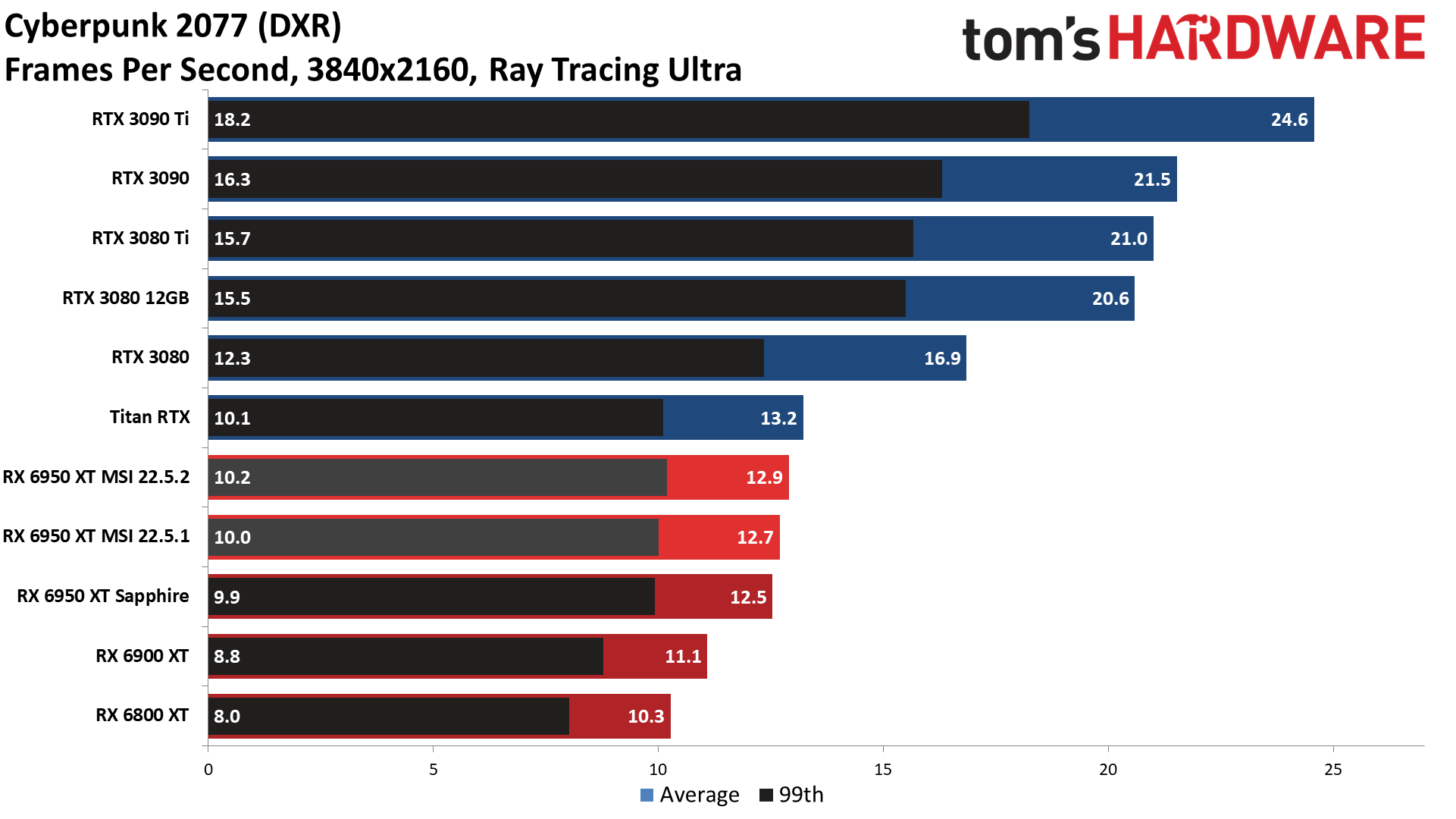
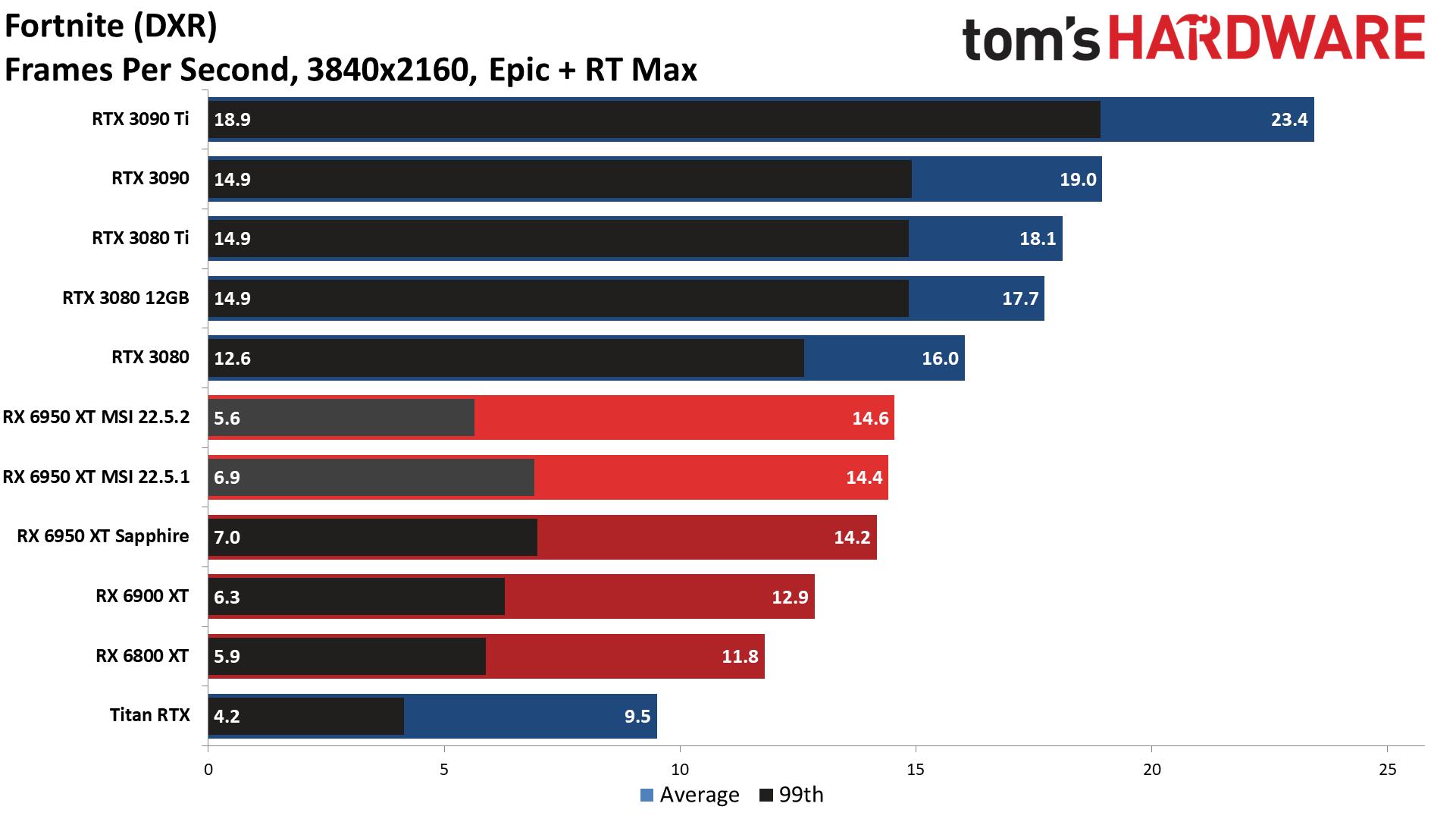
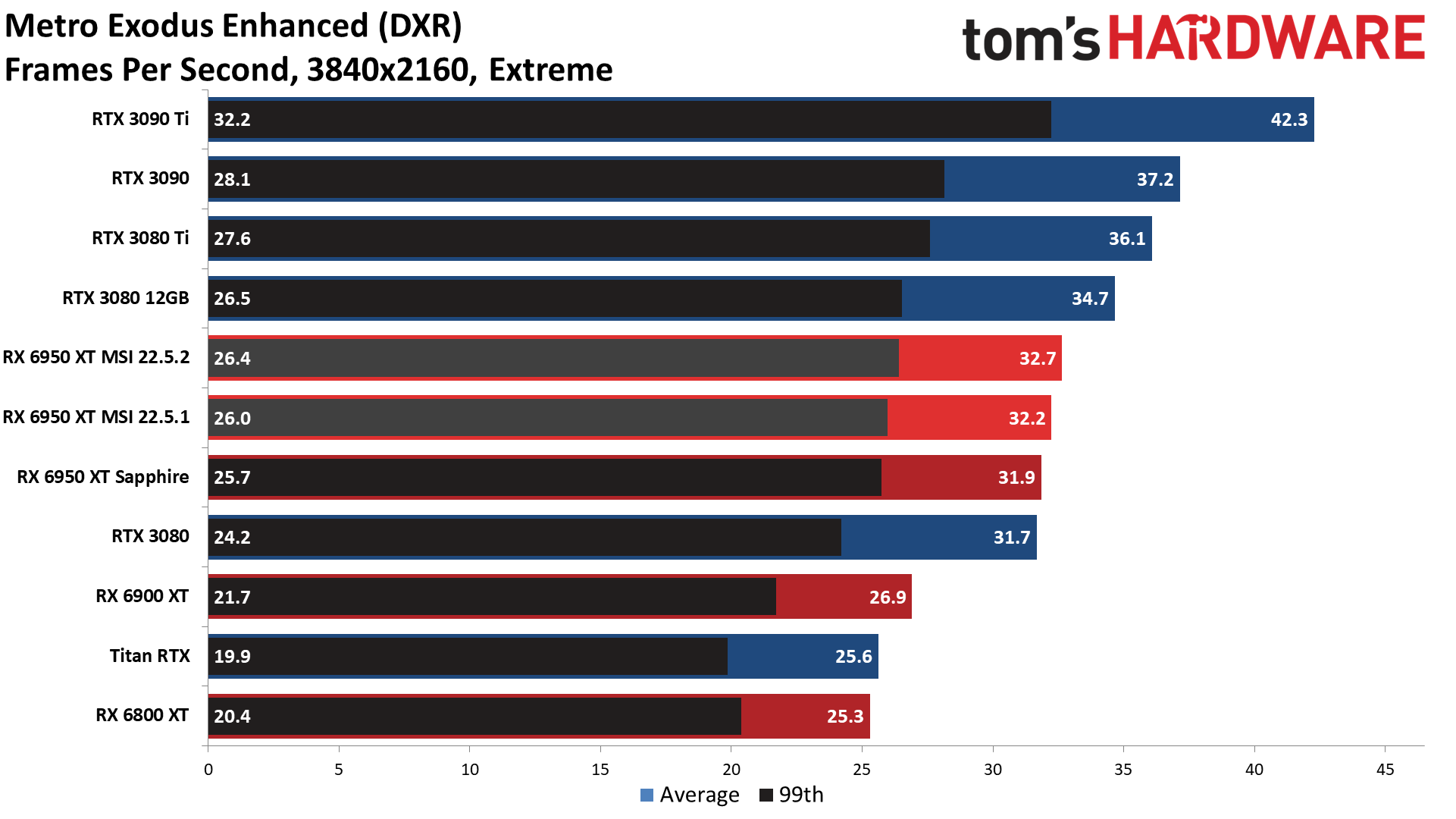
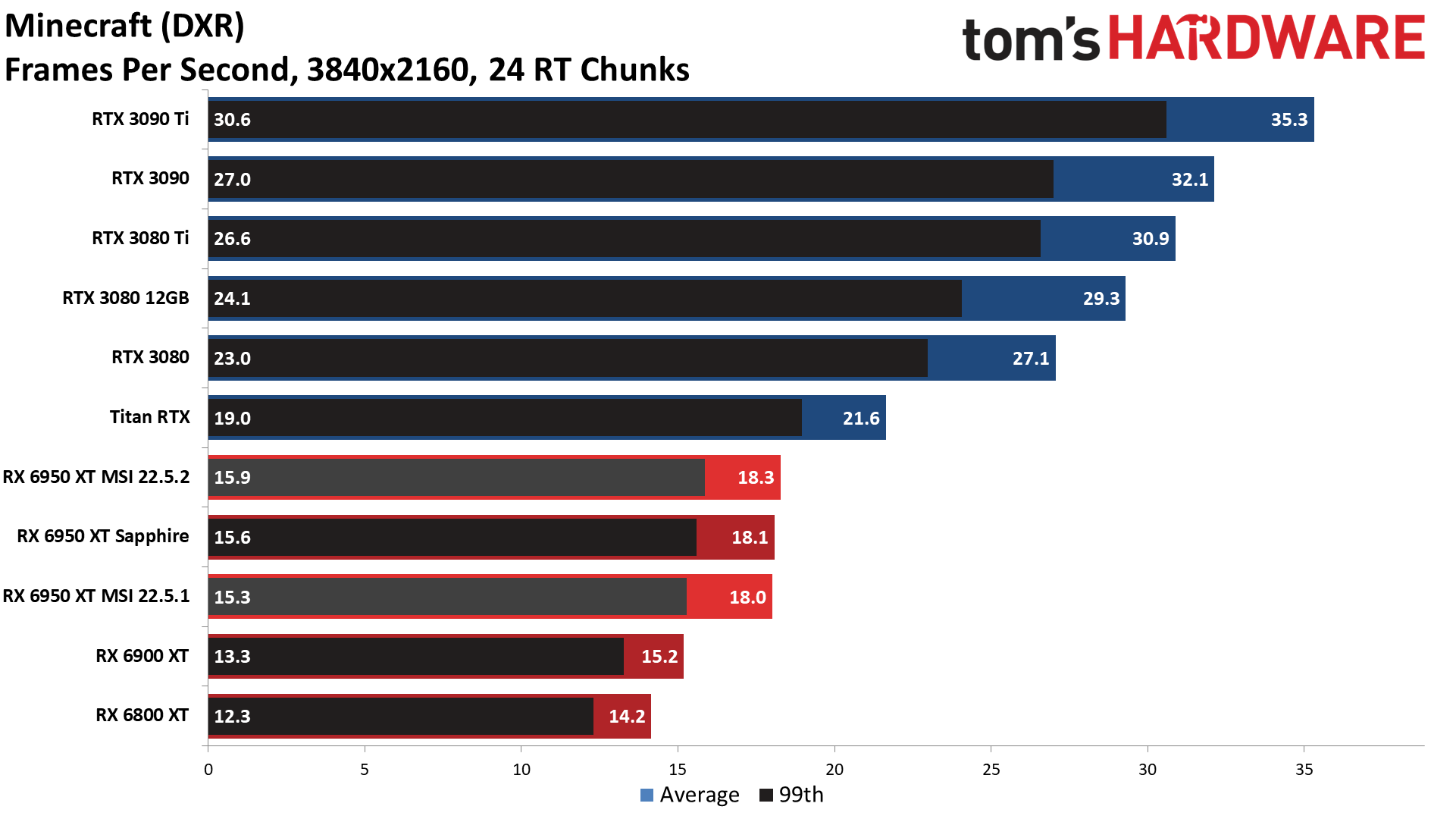
As usual, everything falls apart when we max out settings at 4K with our ray tracing test suite. Even the RTX 3090 Ti only managed just over 31 fps on average, with half of the games falling below 30 fps. The RX 6950 XT ended up in sixth place, behind the 3090 Ti, 3090, 3080 Ti, 3080 12GB, and 3080 10GB. Also note that the newer 22.5.2 drivers barely affected performance for the MSI card, yielding a 1.5% average improvement that only works out to a 0.3 fps difference.
For AMD, the RX 6950 XT only managed more than 30 fps in one of our six DXR (DirectX Raytracing) games, Metro Exodus Enhanced Edition — and only barely, at 33 fps with the latest drivers. Four of the games couldn't even manage 20 fps, either, so they weren't even close to being playable at 4K. Nvidia has the advantage of DLSS support, which remains far more common in DXR games than FSR — only Cyberpunk 2077 has FSR 1.0 as an option right now among our test suite.
I was curious about whether AMD would add tensor core-like hardware to RDNA 3, but after speaking with Sam Naffziger, it sounds like AMD will be content to include machine learning matrix hardware only on its CDNA line. Even without matrix cores, AMD delivers a decent amount of FP16 compute, which might be enough for an alternative upscaling solution — or just stick with FSR 2.0, which only has about a 7% performance hit compared to no upscaling and can compete reasonably well with DLSS. Now we just need more games to support FSR 2.0.
- MORE: Best Graphics Cards
- MORE: GPU Benchmarks and Hierarchy
- MORE: All Graphics Content
Get Tom's Hardware's best news and in-depth reviews, straight to your inbox.
Current page: MSI Radeon RX 6950 XT: 4K Gaming Performance
Prev Page Test Setup for Radeon RX 6950 XT Next Page MSI Radeon RX 6950 XT: 1440p Gaming Performance
Jarred Walton is a senior editor at Tom's Hardware focusing on everything GPU. He has been working as a tech journalist since 2004, writing for AnandTech, Maximum PC, and PC Gamer. From the first S3 Virge '3D decelerators' to today's GPUs, Jarred keeps up with all the latest graphics trends and is the one to ask about game performance.
-
-Fran- What a terrible model... The Sapphire is way way better, like always. MSI didn't even try to make this card decent; more like just fulfilling commitments or quotas.Reply
Also, I wonder if toying around with the VRAM speed would yield better results than the core in terms of extra FPS'es and specially power for the 6950XT. I have the 6900XT and I know for sure it does, but it's capped at ~2000, since it starts artifacting heavily above that speed for me. I run it stock, but I wanted to test the limit of it, heh.
Regards. -
King_V Editing nipick:Reply
We are not showing professional application performance with the MSI card, as it was basically the same story as we saw with our initial MSI RX 6950 XT content creation results.
That MSI that's linked should say Sapphire.
Still, given how little benefit pushing the extreme limits of power consumption gave to MSI, I'm really curious about how much, or rather, little, performance might be lost in backing down the power and clocks... I know nobody buys a top-of-the-line card in order to be power-efficient, but I wonder if we might have a situation here that is similar to the underclocking runs for the Vega 56. -
JarredWaltonGPU Reply
I poked around a bit at VRAM speeds when I was doing the Sapphire review. Ultimately, I didn't say much about it, but even though you can push clocks higher, I don't think you get the gains that I'd expect. There's something goofy with the VRAM speeds on these 18Gbps modules where you often don't get anywhere near the theoretical boost in performance relative to the existing 16Gbps cards. I suspect memory timings (which you can't directly see on the GDDR6) are somehow at play.-Fran- said:What a terrible model... The Sapphire is way way better, like always. MSI didn't even try to make this card decent; more like just fulfilling commitments or quotas.
Also, I wonder if toying around with the VRAM speed would yield better results than the core in terms of extra FPS'es and specially power for the 6950XT. I have the 6900XT and I know for sure it does, but it's capped at ~2000, since it starts artifacting heavily above that speed for me. I run it stock, but I wanted to test the limit of it, heh.
Regards.
For example, and I know this is a specific use case, but the cryptocurrency mining speed of the RX 6950 XT was consistently far lower than the RX 6900 XT, regardless of what I tried. You can get ~65 MH/s out of the RX 6900 XT after tuning, but the best I ever managed on the RX 6950 XT was about 54 MH/s. "Stock" (factory) performance with a tweak to the maximum GPU clock did better than any attempted memory overclock. -
-Fran- Reply
That is so weirdly interesting... I wonder if the higher clocks were at the expense of way way looser timings?JarredWaltonGPU said:I poked around a bit at VRAM speeds when I was doing the Sapphire review. Ultimately, I didn't say much about it, but even though you can push clocks higher, I don't think you get the gains that I'd expect. There's something goofy with the VRAM speeds on these 18Gbps modules where you often don't get anywhere near the theoretical boost in performance relative to the existing 16Gbps cards. I suspect memory timings (which you can't directly see on the GDDR6) are somehow at play.
For example, and I know this is a specific use case, but the cryptocurrency mining speed of the RX 6950 XT was consistently far lower than the RX 6900 XT, regardless of what I tried. You can get ~65 MH/s out of the RX 6900 XT after tuning, but the best I ever managed on the RX 6950 XT was about 54 MH/s. "Stock" (factory) performance with a tweak to the maximum GPU clock did better than any attempted memory overclock.
Regards. -
Sleepy_Hollowed Wow, what on earth is this card for? Expensive, inefficient space heater?Reply
Since even messing with voltages does not seem to make performance better, this is an absolute head scratcher, probably a spec-hunter card only.
That being said, other versions of this card will get some real usage with AMD's FSR 2.0 and it will make absolute sense even with zero tensor cores. Losing ~7 frames per second to nvidia is neglible at those resolutions and with comparable quality as well.
Let's see if next gen and DLSS 3.0 might be different, but DLSS 2.x is not.